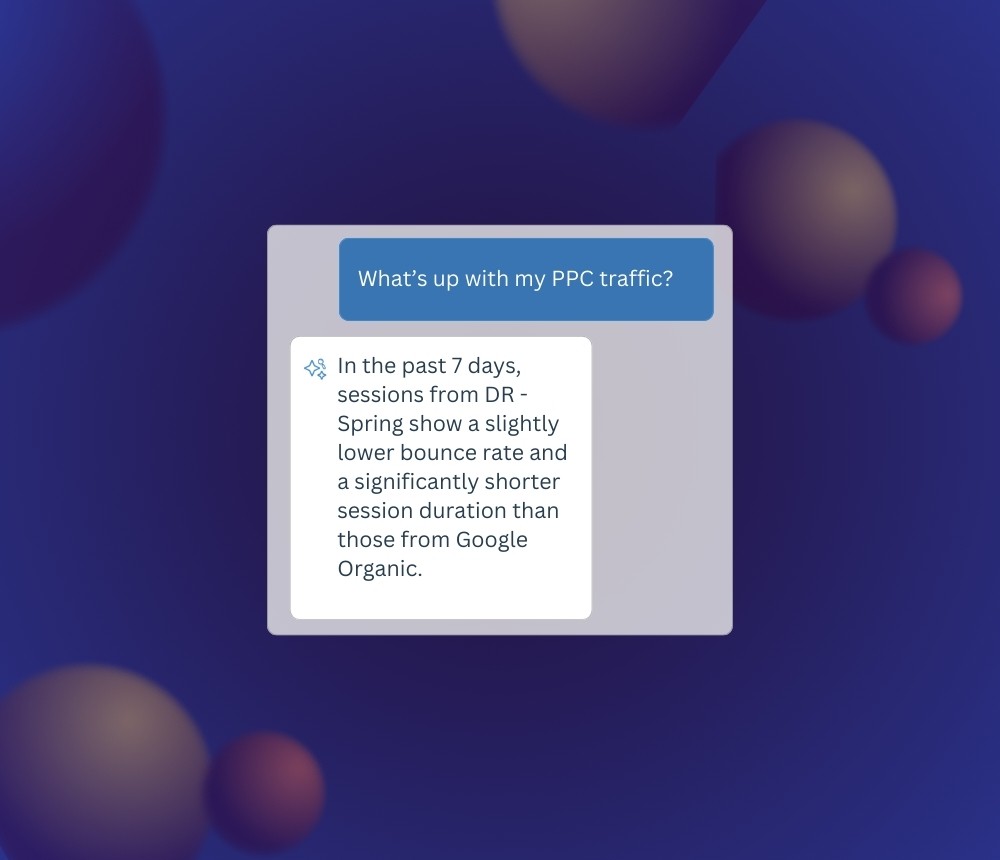Why Conversion Tech Belongs in Your Stack

Conversion rate optimization—just like many other marketing competencies such as content or influencer strategy—is becoming a more mature and nuanced topic.
While this may force some businesses to create a role solely focusing on CRO, many are left piecing together an effort across various roles and departments.
And, honestly, the latter option may be preferable in the long run. Having a decentralized optimization effort means increased chances of spotting conversion blockers, coming up with great testing ideas and the ultimate reward of more conversions.
But it also means your tech stack has to support a collaborative CRO effort.
A conversion rate optimisation tool must become the link between observation and insight, between problem and solution—and they have to make that connection happen efficiently time and time again.
The role of technology in CRO
As is with many modern SaaS categories, the options available in conversion rate optimization software aim to be equal parts powerful and easy to use.
To achieve this balance, the tools themselves must offer great flexibility—simple enough to use for a quick glance at a heatmap and powerful enough to track custom user data and allow for advanced filtering of visitors. If you’re a small business or team of one, they allow you to do the work of two or three people on a CRO team.
If you’re part of a larger organization, CRO tools also allow you to support other business needs like executing and sharing results from customer research or performing site chat duties.
The technology itself is a supportive partner, but just like many tools, it’s best used after a few tweaks to customize for your specific business.
What does it mean to “do CRO”?
No matter how sophisticated you’re hoping to make things over time, we recommend starting with organizing your CRO effort into two distinct buckets.
Reactive optimization:
With reactive CRO, you’re working to find evidence of a known issue like low conversion rates or customer complaints. You’re starting with an audience segment or session recordings filter in mind, and filling in the other side of the equation with visitor behavior data.
Proactive optimization:
On the proactive side of things, CRO tools serve a more exploratory function. You use heatmaps, recordings and other tools to not only better understand what people are doing on your site, but to also spot areas that could be optimized.
How you personally handle CRO largely depends on your role and how mature other parts of your business are. If you have a solid grasp on business and departmental objectives and have clear paths for communication, you’ll likely be fed with more items to evaluate with reactive optimization.
If your role centers around the customer experience or you’re just getting things started, you’ll want to carve out the space for proactively evaluating visitor behavior. And you’ll want to quickly identify the role technology can play in making you even more efficient.
Who can be a CRO expert?
A CRO expert is someone who studies visitor behavior to create a better website and increase conversions. It’s really that simple.
CRO can be a massive inter-departmental effort or it can be something that only happens when you have extra time. Either way, the focus is on giving the people visiting your website a great user experience. And because there’s such variability in how companies handle this optimization, there’s a wide array of job roles that can handle the responsibilities.
UX design:
Designers can use CRO tools to show them how real visitors are interacting with their layout, menus, forms and more. Gone are the days of guessing and coming up with a design modification based on a hunch. CRO tools for designers are a confidence booster and a proof point for new concepts.
Marketing:
There’s a clear line between the website and marketing strategy at many companies. Marketing teams often take on A/B testing, messaging and brand awareness or voice of the customer processes--all of which can benefit the insights found in CRO tools.
Customer service:
Some CRO tools include a live chat function or other customer communication and feedback features like surveying and announcements. Oftentimes, customer service teams can benefit from watching Session Recordings to see what someone was doing on their website before submitting a support ticket or opening a help chat.
Web developers:
We see developers using our tools in two very specific ways. First, they’ll be investigating a known issue like rendering problems, mobile usability or errant code causing formatting issues. On the other hand, they’ll use tools to proactively spot areas that can be improved. Where your developers fall really depends on what other roles in the organization can handle optimization.
To get the most out of your CRO software, we recommend:
Pre-saved audience segments
Some tools like Lucky Orange allow you to save segments of your audience inside tools so you don’t have to apply filters over and over again when you log in.
For instance, if you regularly analyze returning visitors from Facebook—you can create a Saved Segment for quick reference later on. You can also filter by UTM parameters to view traffic from a certain campaign or ad.
Pass through custom user data
Most tools will offer default filtering and data fields out of the box, but custom user data allows you to dial in what you’re analyzing to your specific business needs.
Many e-commerce customers, for example, will use our API to pass through specific SKUs purchased, customer ID or total cart value.
Determine a note-taking and communication approach
A big part of CRO success is remembering the interesting things you see in session recordings and heatmaps. And if you can return to your notes at a later date alongside a visitor’s recording, then you’ll be prepared to share the information with your teammates even more readily.
The takeaway here: Be sure you know how you’ll take notes, and how you’ll plan to share them with people.
Build conversion funnels applicable to your customer journey
Yes, every business aims to increase conversions. But how people navigate your site before converting is where your attention needs to be. Building different funnels throughout the customer journey including key pages on your site (product page, FAQ, shipping information, pricing, blog posts, etc.) will let you spot pages causing the most (or least) abandonment.
This is a great way to always have an eye on your site, as you can jump in and see visitors who started, but didn’t finish, the conversion funnel and determine what might’ve gotten in their way.
What to measure
It’s worth mentioning that a true CRO program doesn’t just sit with conversion rates and call it a day.
Teams who find success with CRO as a focus are measuring and optimizing all of the factors that lead to a conversion. Be it time on page, pages per session, add-to-carts, visiting a certain page on your site or any other key factor—the roads that lead to a conversion all impact the golden metric of conversion rate.
But it doesn’t have to all be quantitative in nature.
Much of CRO is qualitative and the insights you find are describing visitor behavior, as opposed to applying a numerical result.
This is why note-taking is so important with CRO. Being able to categorize your findings and prioritize optimization opportunities is an art and one worth pursuing if your team wants to deliver a world-class website experience. Even if the results of your efforts are simple things like adding internal links or a bit of blog tech optimization, you're on the path to winning.
After all, you’re optimizing for a human online experience, not just a number.
Choosing the right CRO tool for your business
Though the CRO software landscape includes a whole host of options, it’s certainly not at the point of commoditization.
On the surface, many tools may look similar, or the same. What really matters when comparing options is the aforementioned combination of ease of use and the likelihood of delivering the insights you need.
And we think Lucky Orange is pretty darn good at that. Give it a try and let us know what kind of insights you find.



